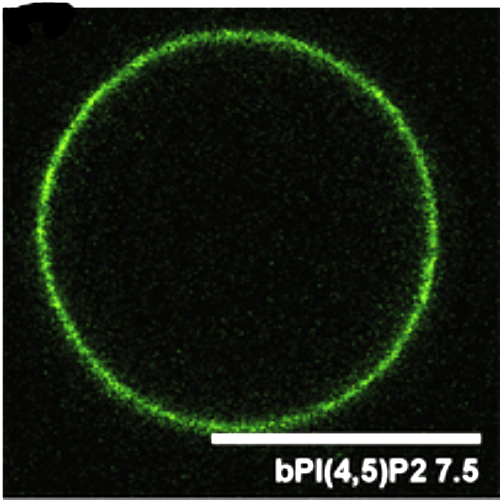In vitro Reconstitution of a Membrane Switch Mechanism for the Polarity Protein LGL.
Cell polarity arises from a combination of interactions between biological molecules, such as activation, inhibition, and positive or negative feedback between specific polarity units. Activation and inhibition often take place in the form of a membrane binding switch. Lethal giant larvae (LGL), a conserved regulator of cell polarity in animals, was suggested to function as such a switch. LGL localizes to both the cytoplasm and, asymmetrically, the membrane. However, the spatial regulation mechanism of LGL membrane localization has remained unclear. For systematic elucidation, we set out to reconstitute a minimal polarity unit using a model membrane, Caenorhabditis elegans LGL (LGL-1), and atypical protein kinase C (aPKC) supposed to activate the membrane switch. We identified a membrane binding sequence (MBS) in LGL-1 by a screen in vivo, reconstituted LGL-1 membrane binding in vitro, and successfully implemented the membrane switch by aPKC phosphorylation activity, detaching LGL from membranes. Upon membrane binding, LGL-1 MBS folds into an alpha-helix in which three regions can be identified: a positively charged patch, a switch area containing the three aPKC phosphorylation sites, and a hydrophobic area probably buried in the membrane. Phosphorylation by aPKC dramatically reduces the binding affinity of the LGL-1 MBS to negatively charged model membranes, inducing its detachment. Specific residues in the MBS are critical for LGL-1 function in C. elegans.

- J Mol Biol. 2016 Dec 4;428(24 Pt A):4828-4842
- 2016
- Cell Biology
- 27720986
- PubMed
Enabled by:
